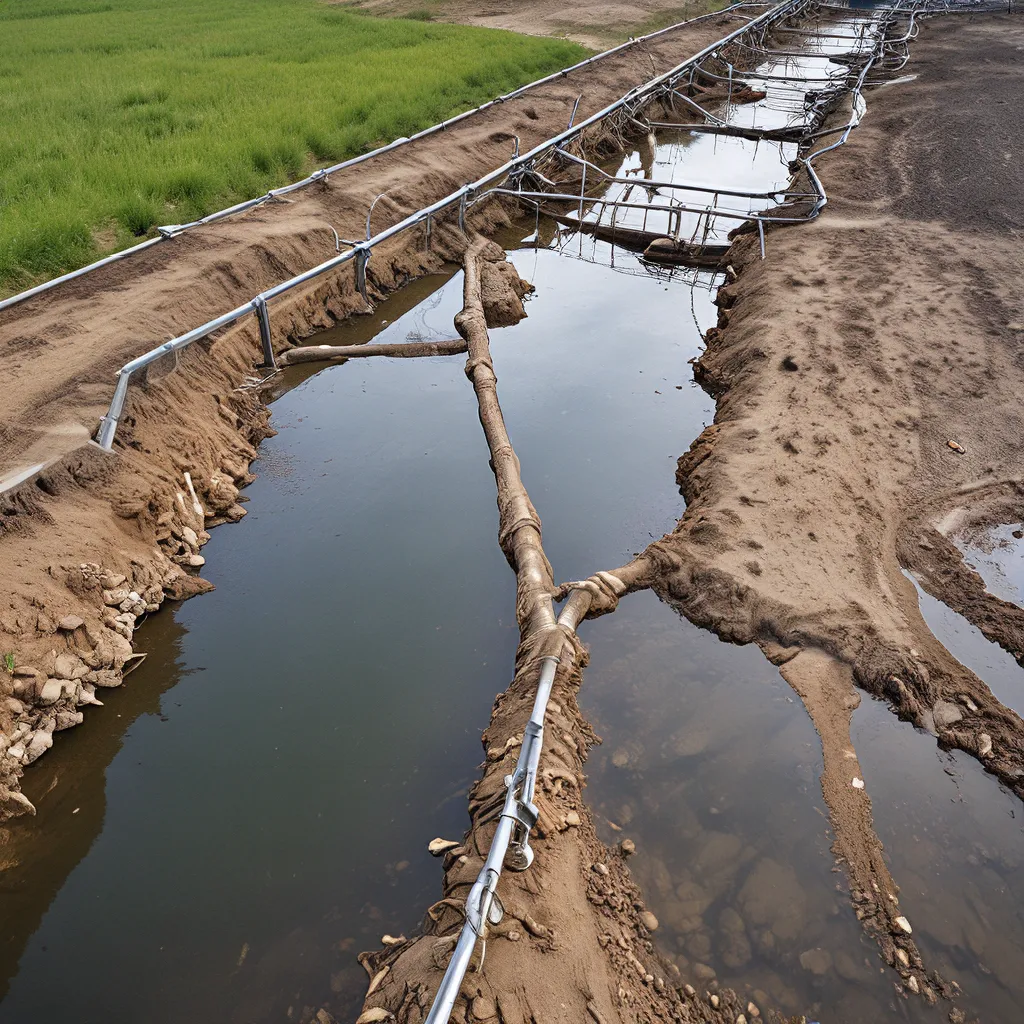
As an environmental enthusiast, I’ve always been fascinated by the concept of the bioeconomy – the idea of transforming waste streams into valuable resources. And when it comes to unlocking this potential, wastewater treatment is undoubtedly one of the most exciting frontiers.
Bridging the Water-Energy Nexus
Let’s start by exploring the water-energy nexus – the intricate relationship between water and energy systems. Traditionally, wastewater treatment plants have been viewed primarily as facilities for purifying water, ensuring its safe release back into the environment. But there’s so much more to the story.
According to experts from the Veolia Water Technologies team, the water sector has the potential to play a crucial role in bridging the gap between water, energy, and resource management. By combining multiple technologies, these facilities can not only treat complex industrial wastewater but also unlock its potential as a valuable resource.
For instance, the chemical industry and pulping industries are now using their process effluent as a resource for biogas production through anaerobic digestion (AD). This allows them to generate biogas as an alternative energy source while also reducing waste disposal costs. It’s a true win-win scenario!
Turning Wastewater Treatment Plants into Energy Producers
But the real game-changer is the shift happening in the municipal wastewater treatment space. As Marie Esteve, sales and tender manager at Biothane, explains, municipalities are transforming their wastewater treatment plants into energy production plants.
Historically, these facilities were designed solely to treat wastewater to the appropriate purity for release into the natural environment. But now, they’re being reimagined as hubs for renewable energy generation.
One remarkable example is the energy-positive wastewater treatment plant in Cagnes-sur-Mer, France, which is one of Veolia’s 20 references. While the plant consumes 87 GWh per year, it produces 105 GWh per year through biomethane production. This means the facility not only meets its own energy needs but also generates surplus renewable energy for resale by reinjecting it into the grid.
Another exemplary case is a plant in France that processes wastewater from 950,000 people, producing 50 gigawatt-hours per year of biomethane for injection into the grid. This is achieved through the strategic deployment of four key Veolia technologies: BIOTHELYS, ANITA Mox, SULFOTHANE, and MEMGAS.
Unlocking the Bioeconomy Potential
The shift towards energy-positive wastewater treatment plants is not just an isolated phenomenon. It’s part of a broader push at the European level to boost the use of renewables, especially biomethane, as highlighted in the REPowerEU plan presented by the European Commission.
According to the European Biogas Association, wastewater could contribute to 170 Terawatt-hour (TWh) of biomethane production, which could account for more than 10% of the potential biomethane production in Europe.
This is a truly exciting prospect, as it demonstrates the untapped potential of wastewater as a resource within the bioeconomy. By leveraging innovative technologies and shifting mindsets, we can transform these facilities from mere treatment plants into energy production powerhouses.
The Role of Water Companies in the Bioeconomy
Of course, realizing this potential requires the expertise and collaboration of water companies like Alpha Wastewater. These companies are at the forefront of developing and implementing the latest technologies to maximize the value extraction from wastewater.
As Neslican Uzkurt Kaljunen, process sales engineer at AnoxKaldnes, points out, there are multiple challenges to be solved when it comes to the treatment of complex industrial wastewater, such as load variations, combined wastewater streams with difficult-to-degrade compounds, and high wastewater temperatures. But with the right expertise and a collaborative approach, these challenges can be overcome.
Water companies like Alpha Wastewater are equipped with the knowledge and capabilities to find the most efficient solutions, ensuring operational costs are reduced and the energy-efficiency of the process is optimized. By working closely with their clients, they can unlock the true potential of wastewater as a valuable resource within the bioeconomy.
The Future of Wastewater Treatment
As we look to the future, the role of wastewater treatment in the bioeconomy is only set to grow. With ongoing research, the development of new technologies, and the evolving regulatory landscape, the possibilities are truly exciting.
Some experts believe that we may see even more integration between wastewater treatment and renewable energy production, with plants becoming true hubs for the circular economy. There’s also the potential for further extraction and utilization of valuable materials, such as nutrients, minerals, and even precious metals, from wastewater streams.
Of course, as with any complex topic, there is likely to be ongoing debate and uncertainty around the best approaches and the relative merits of different technologies. But one thing is clear: the wastewater treatment sector is poised to play a pivotal role in shaping the future of the bioeconomy.
So, whether you’re an industry professional, a policymaker, or simply a curious citizen, I encourage you to keep a close eye on this rapidly evolving space. The future of our planet may very well be flushed down the drain – in the most sustainable way possible, of course.